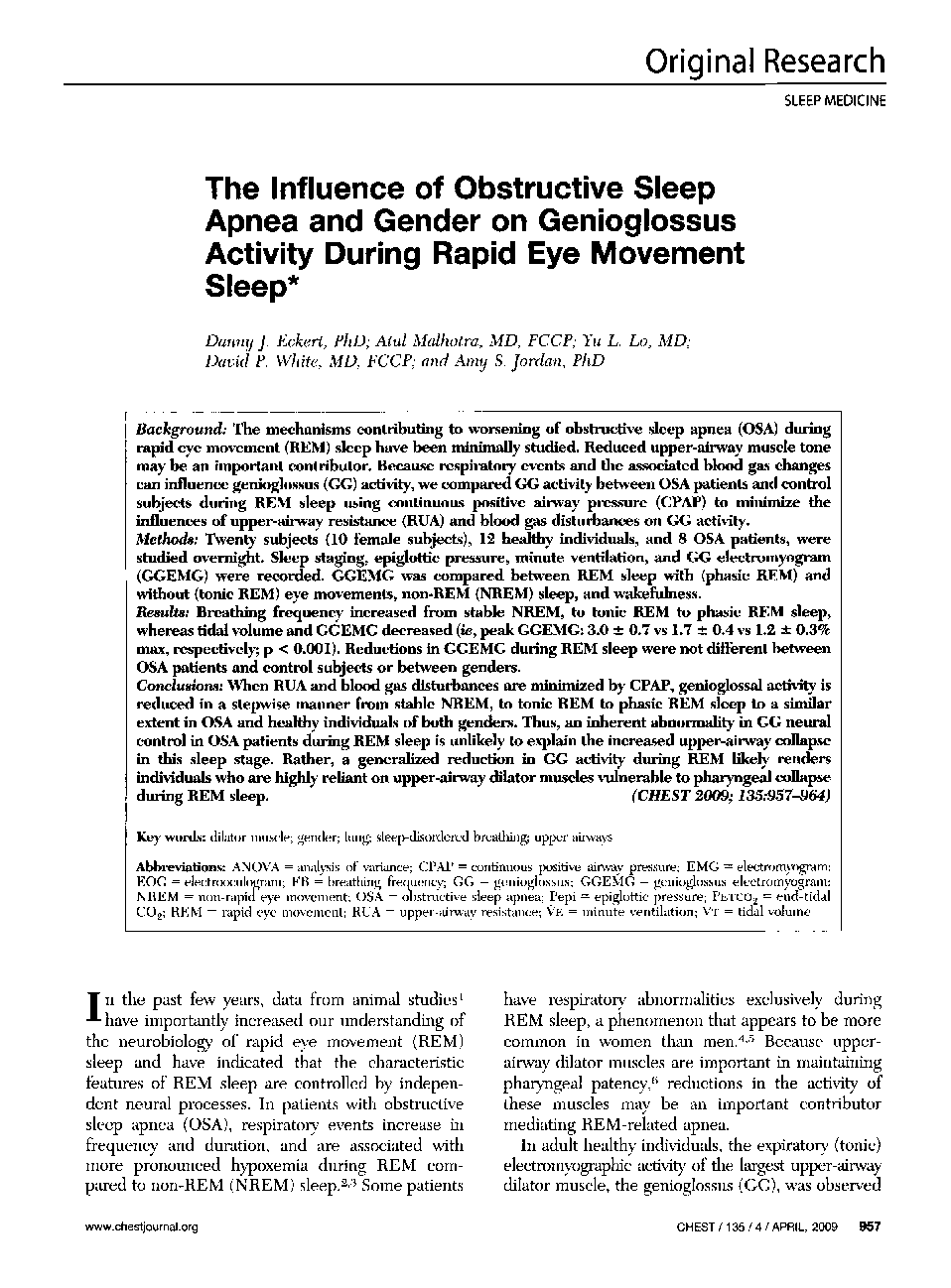| Article ID | Journal | Published Year | Pages | File Type |
|---|---|---|---|---|
| 2903620 | Chest | 2009 | 8 Pages |
Abstract
When RUA and blood gas disturbances are minimized by CPAP, genioglossal activity is reduced in a stepwise manner from stable NREM, to tonic REM to phasic REM sleep to a similar extent in OSA and healthy individuals of both genders. Thus, an inherent abnormality in GG neural control in OSA patients during REM sleep is unlikely to explain the increased upper-airway collapse in this sleep stage. Rather, a generalized reduction in GG activity during REM likely renders individuals who are highly reliant on upper-airway dilator muscles vulnerable to pharyngeal collapse during REM sleep.
Keywords
PepiPetCO2EOGNREMREMCPAPgenioglossusTV, Tidal volumeEnd-tidal CO2obstructive sleep apneasleep-disordered breathingelectrooculogramelectromyogramEMGOsaanalysis of varianceANOVAminute ventilationGenderrapid eye movementnon-rapid eye movementUpper airwaysLungbreathing frequencyContinuous positive airway pressure
Related Topics
Health Sciences
Medicine and Dentistry
Cardiology and Cardiovascular Medicine
Authors
Danny J. PhD, Atul MD, FCCP, Yu L. MD, David P. MD, FCCP, Amy S. PhD,
